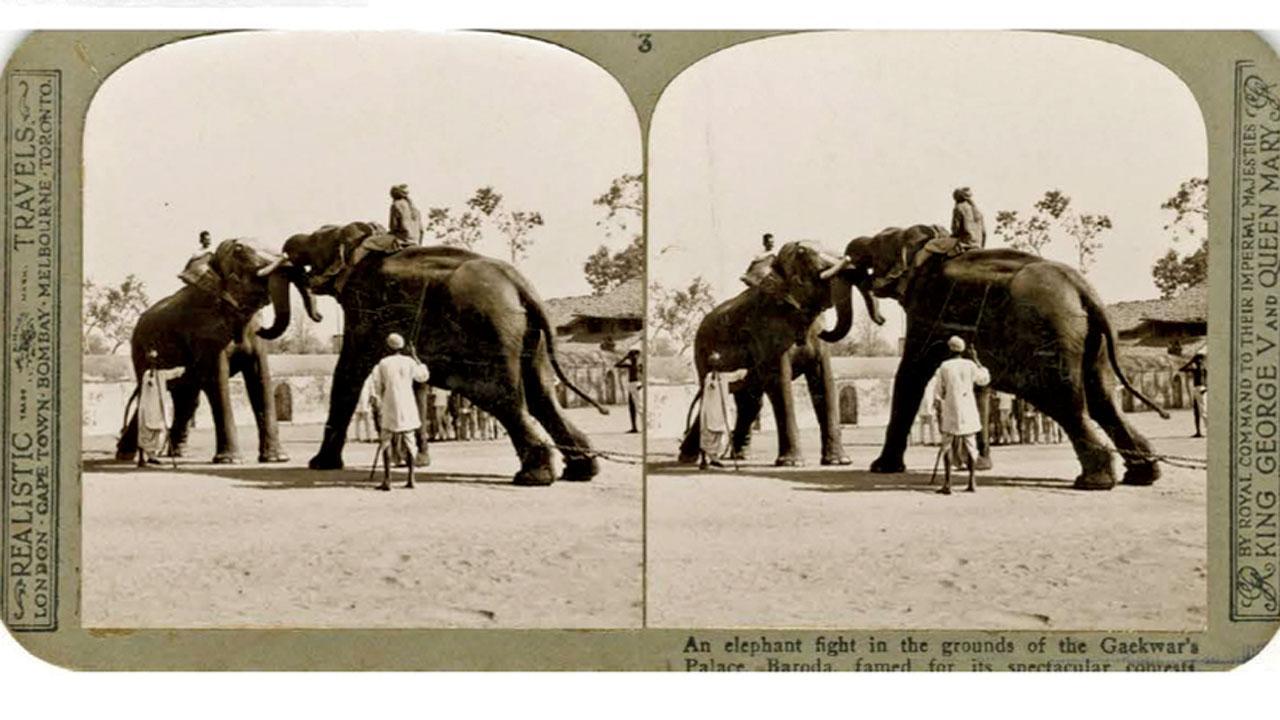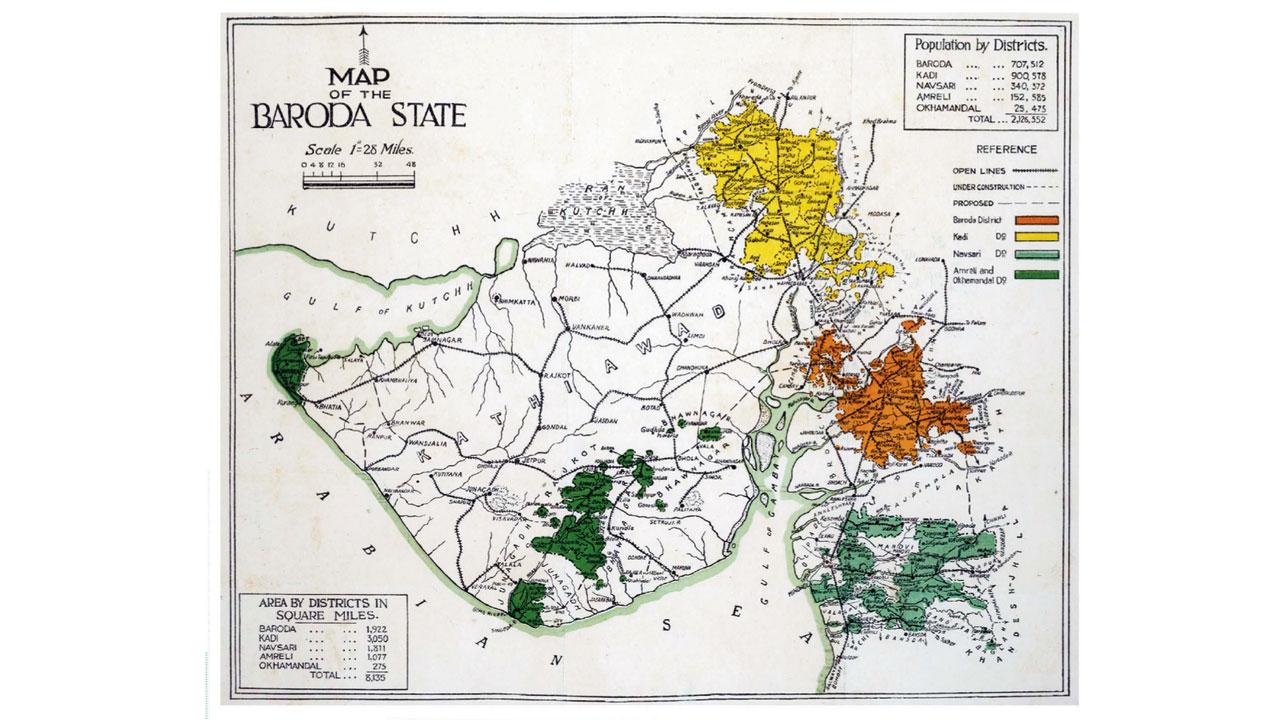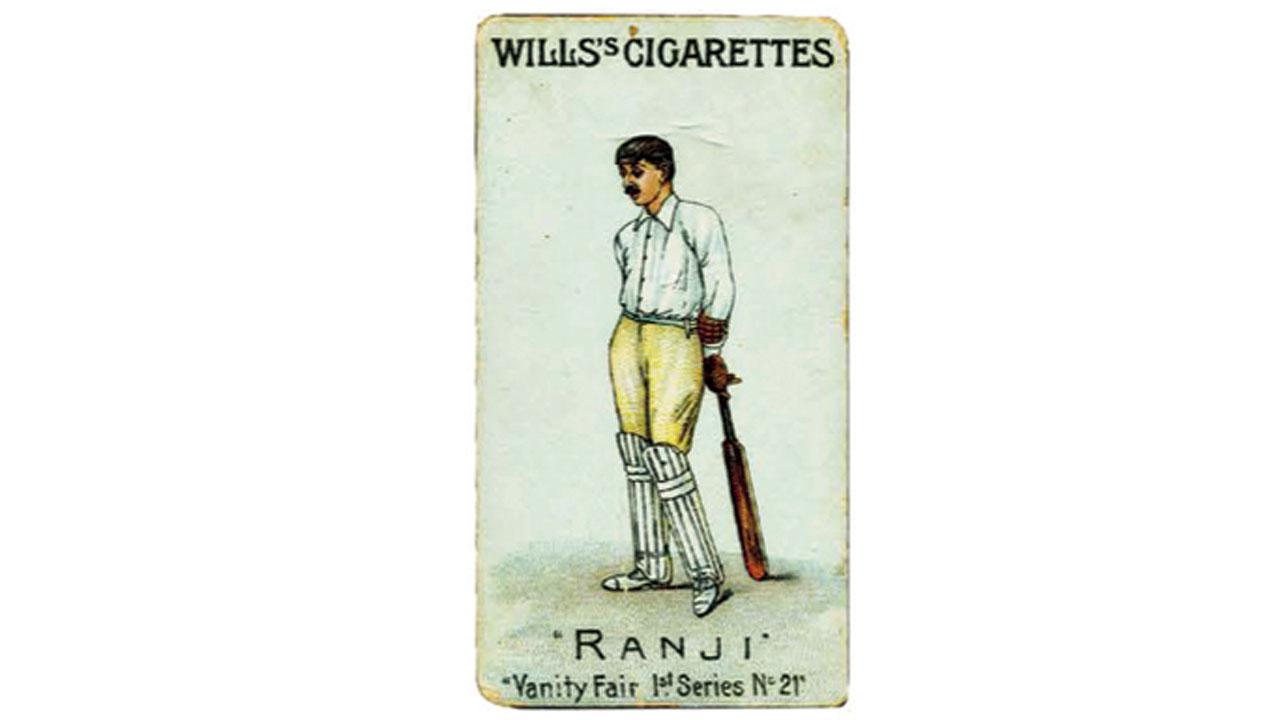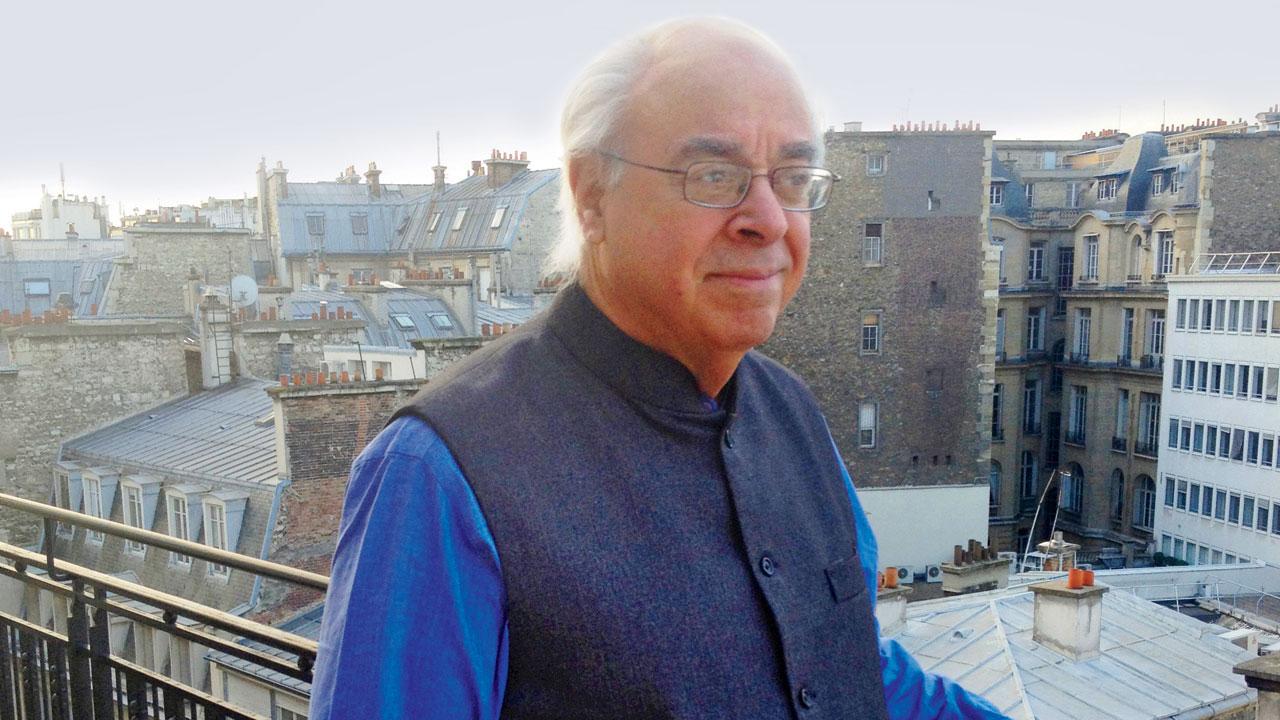American scholar Dr Kenneth X Robbins’ public talk promises to offer a refreshing, revelatory perspective on the life and times of the rulers of India’s Princely States, with a focus on Gujarat. Edited excerpts from an interview

(Left, above) The volumes contain a survey of palace and temple wall paintings in Gujarat. Images Courtesy/Dr Kenneth Robbins, Dr Bhau Daji Lad Museum
How did your research lead you to focus on the Princely States of Gujarat during colonialism?
Dr Kenneth X Robbins: The year 1947 witnessed great accomplishments in human history, the consolidation of hundreds of states along with cities including Ahmedabad into the new Republic of India. Whereas control of the Punjab, Bengal, and Kashmir was divided, Pakistani attempts to divide Gujarat were quickly thwarted. In Gujarat, these states ranged from a large progressive state, Baroda, with a population of 2,433,077 in 1931, to Bilbari in the Dangs with a population of 27. Somehow, the whole area has not garnered much interest. It still surprises many Westerners that most of the Rajput States were here, and not in Rajasthan.

Merchants functioned across Gujarat’s boundaries using hundis to transfer funds, pay debts, in exchange for goods, and as a traveller’s check
This is why I have chosen to deal with these states first in my plan to edit multiple series dealing with other states across India. Work has begun on both the Deccan States Agency and the Punjab States Agency. Of the 22 authors that include historians, social scientists, and art historians, members of royal and noble families of Bhavnagar, Dhrangadhra, Kamadhia, Mansa, and Surgana have also contributed as have historians from the great university created by and named after Maharaja Sayajirao Gaekwad III.
This research publication was inspired by your personal archives. Tell us about the connection.
KR: My archives revealed that there were tremendous differences in local policy choices and their implementation in India. For decades, I have been preparing publications and exhibitions about the Indian Princely States (IPS). Most of my ideas for documentation originate with paintings, photographs, posters, books, articles, documents, maps, correspondence, interviews, postcards, trade cards, commemorative medals, numismatic and philatelic materials, share certificates, hundis, flags, ephemera, and other items that I have collected over 60 years. This project highlights that historical writing need not take the form of a traditional “stamp collection.”

Ranji was a ‘citizen’ of the British Empire, prince of a little state, ‘king’ of cricket, and ‘emperor’ of the good life, writes Robbins
Historians must find ways of documenting the lives and perspectives of diverse populations of these states, and the tribulations of the general population. Women’s contributions and issues, the roles of the Pushtimarg and Swaminarayan Sampradayas, and the history of groups like the Bhils and Kathis are important. Why limit discussion only to the fairy-tale lives of rulers?
Nawabs of East African descent (Habshis, Siddis) ruled Sachin (near Surat) and the Janjira dependency of Jafrabad. Earlier, the Siddis had played major roles as Mughal admirals as well as being powerful in Surat. There are also African villagers living everywhere from Kutch to the Gir forest, and Bhavnagar. Gujarat has a long history of international trade with merchants and traders going across Asia and East Africa.
Could you share a few fascinating discoveries that emerged from your research?
KR: Maps and other documents show not only hundreds of states, but extreme fragmentation since Baroda and many other states in Western India were composed of multiple land parcels interspersed with territories of British India and other states. The smaller states did not have full internal powers and some were even deemed “non-jurisdictional”. Some states were controlled by multiple shareholders.

The families of many leaders of the Indian freedom movement belonged to these states. Much of Gandhi’s approach can be traced back to political practices in these states during the times when generations of Gandhi’s ancestors were heavily involved in their governmental service. A surprising number of other world-famous figures came from these states, including the poet prince Kalapi or the pioneering cricket superstar Ranji.
What role did the rulers of India’s Princely States play to patronise the arts?
KR: Maharaja Sayajirao Gaekwad III was one of the world’s greatest patrons of art, music, culture, innovation, and modernisation. He promoted the careers of gifted personalities Inayat Khan, Raja Ravi Varma and Aurobindo. We moved the history of painting forward with an extended survey of popular palace and temple wall paintings as well as pioneering work about miniature paintings in states like Radhanpur and the Swaminarayan Movement.
What was the relationship between the colonial rulers and the rulers of the IPS till India’s Independence?
KR: The historical discourse on India often ignores the states or describes their rulers only as ‘Oriental despots’ or ‘puppets’ who participated in spectacles and received honours, which gave the Raj an aura of invulnerability and permanence. At the same time, the British system of changing the groupings of states and their relationship to the Government of India and the Bombay Government as well as attaching smaller states to larger ones gives the false impression that the British were omnipotent and omniscient.

Dr Kenneth X Robbins
...And what is your take on these observations?
KR: Maharaja Sayajirao Gaekwad III and other rulers were guardians of tradition, promoted social and cultural values, and were important political actors. Some tried to insist that British control was limited and even that they had entered associations with the British on equal voluntary terms.
Ours is a conscious effort to present princely splendour alongside information about how the administrations of these states functioned. It was not limited to their relationships with the British; it includes local politics such as disagreements about power and tribute between states and succession fights. Rulers were often at odds with rival nobles, raiders, tribal rebels, and even wealthy religious groups from outside their states.
On: Today; 5.30 pm onwards
At: Education Centre, Dr Bhau Daji Lad Museum, Rani Baug, Byculla East.
Log on to: insider.in (first-come-first-served basis)
 Subscribe today by clicking the link and stay updated with the latest news!" Click here!
Subscribe today by clicking the link and stay updated with the latest news!" Click here!










